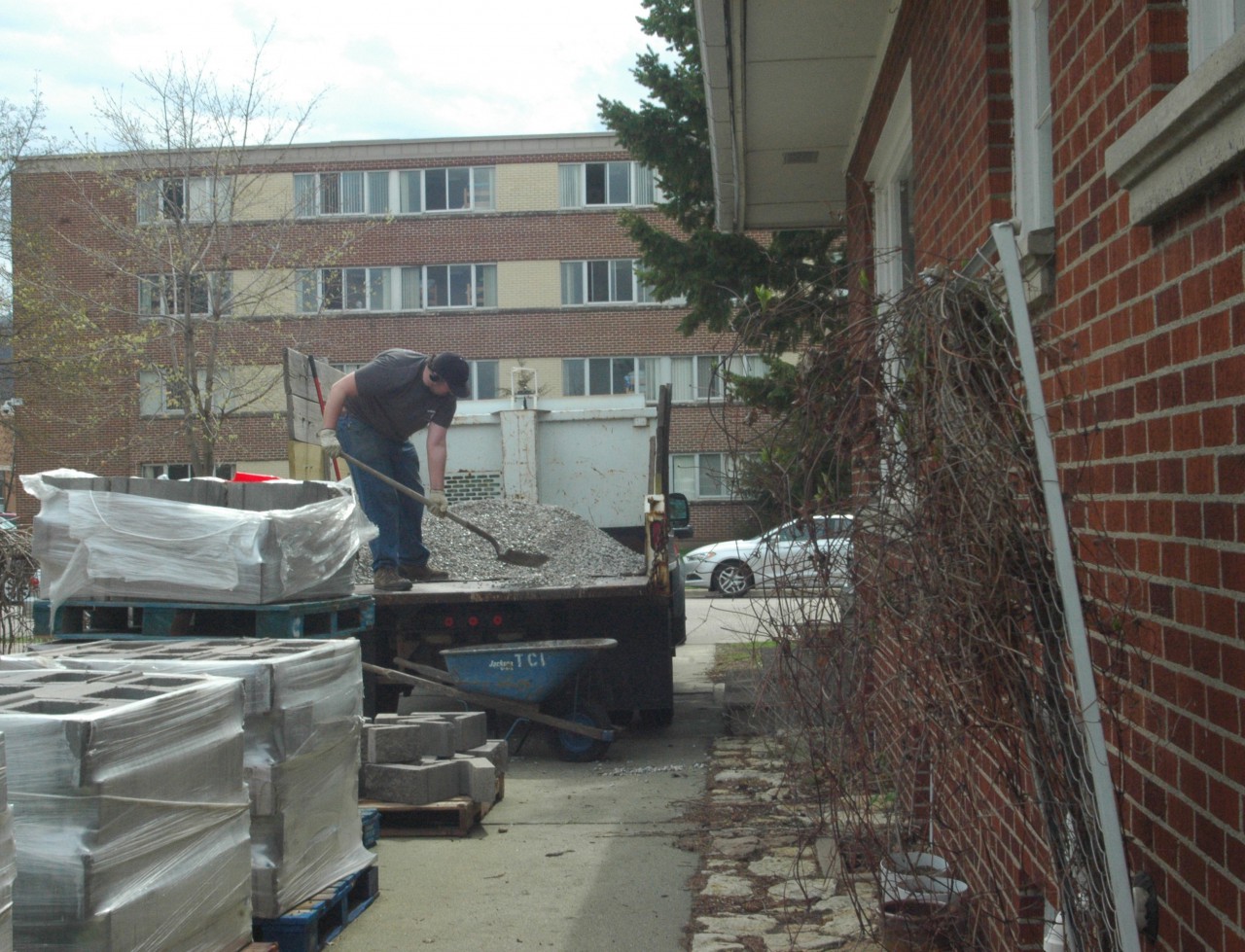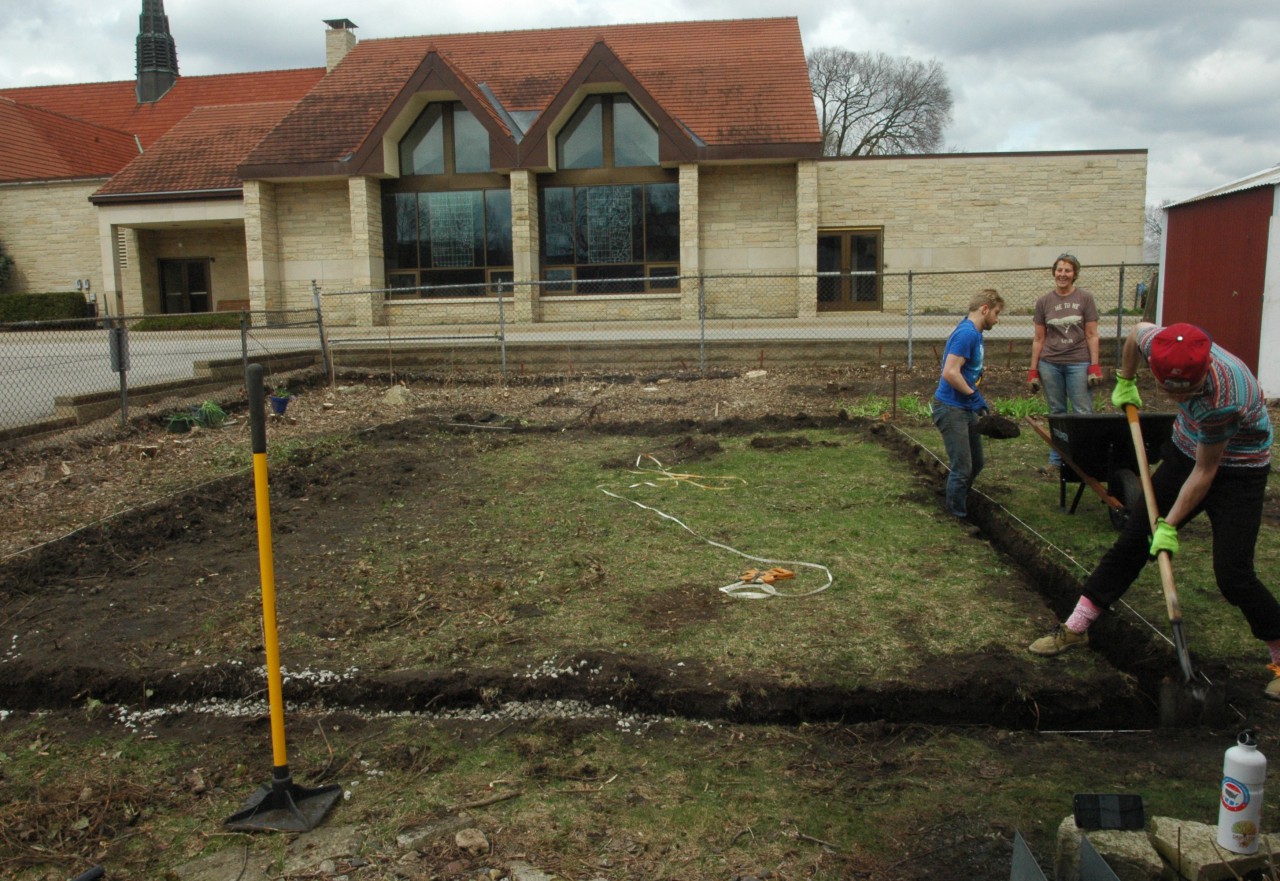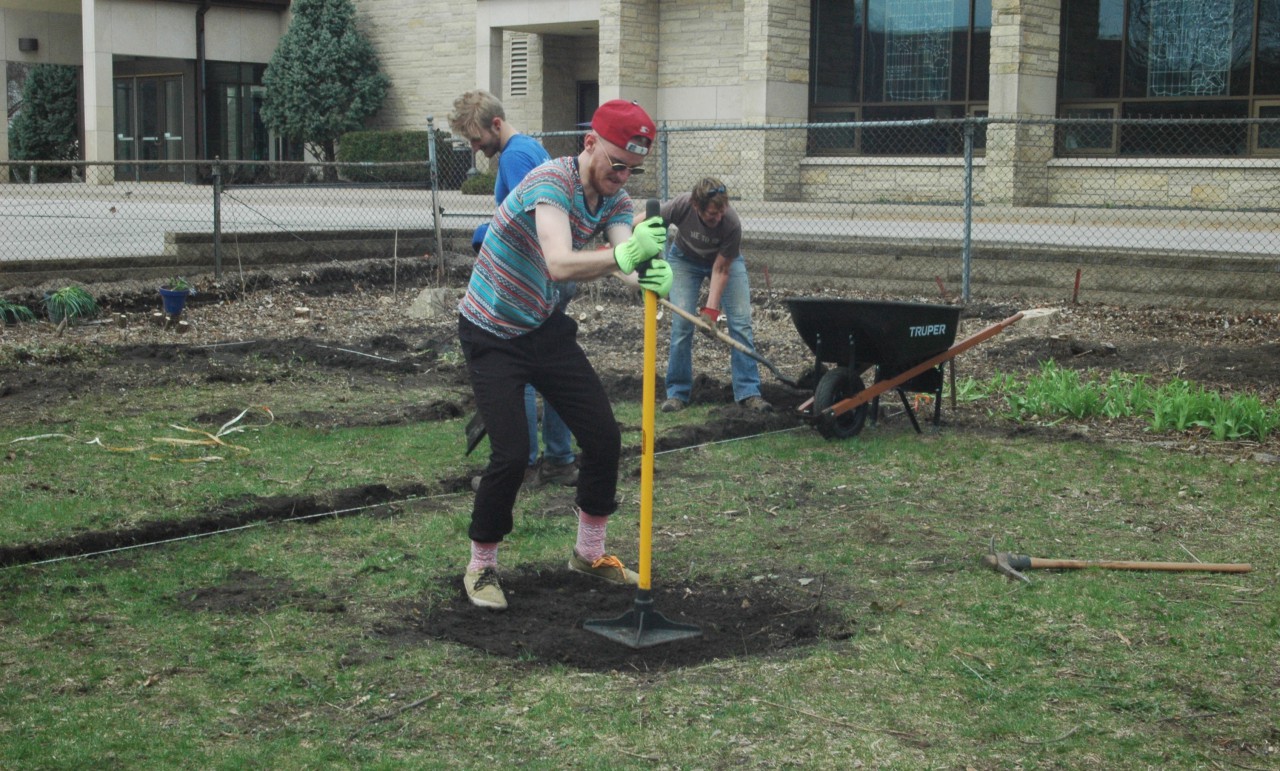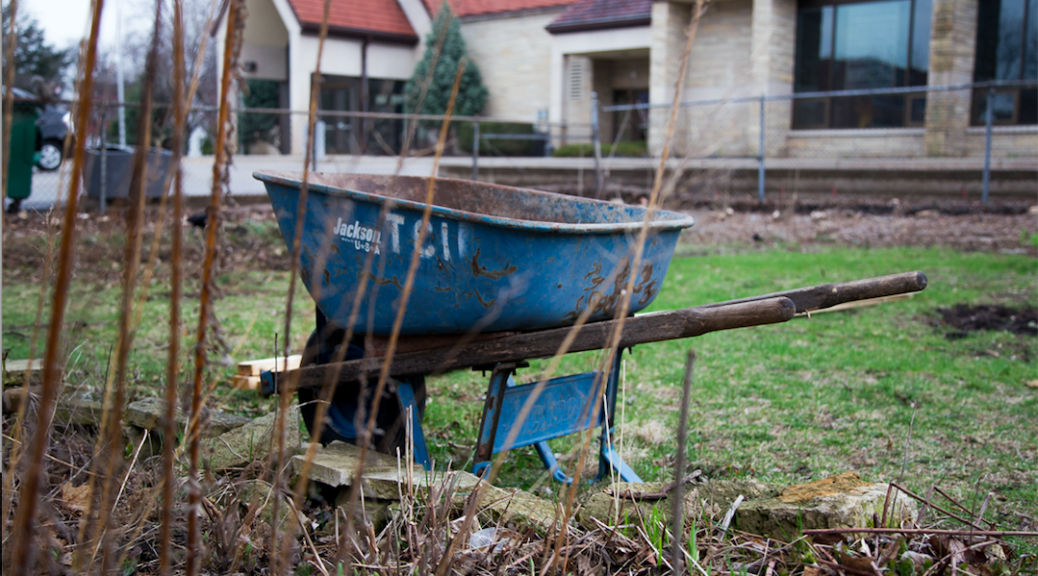by Elizabeth Pulanco, featured photo by Taylor Nyman
With the spring season underway, flowers and outdoor projects are in bloom.
At Winona State University, the process of creating a community garden has taken root with the construction of a raised soil bed on April 15.
The Winona State SEED Garden is located on West 8th Street across from academic buildings on the Winona State Campus.
The SEED (sustainable, edible, educational, discovery) Garden has been in development for several years. Sophomore Jackson Ramsland has been the most recent student to take on the task.
Ramsland said his involvement with the garden began during spring semester of 2016 when friend of his, Allison Bettin asked if he wanted to take over the planning.
“Being very interested in gardening, I said ‘yes’ and took on the project,” Ramsland said.
Ramsland said his interest in gardening is connected to his time spent in the many gardens at his childhood home and summer jobs working at tree nurseries and organic farms.
“When I was growing up, my family had a pretty big plot of land so we had a lot of gardens,” Ramsland said. “We had a flower garden in the front yard and in the backyard, we had a couple of raised bed food gardens and we would always grow tomatoes and zucchinis.”
Ramsland said he had weekly meetings with faculty members, members of the university’s arboretum committee and the health and wellness department.
From the beginning, Ramsland said the creation of the garden has been a group effort.
“I have established some very important relationships with faculty members, student groups that are interested in working outside,” Ramsland said.
Jonathon Mauser, a chemistry professor and member of Winona State’s arboretum committee was also interested in the project and worked with Ramsland to find resources and funds to move the project forward.

Mauser said he had previous experiences working with community gardens and helped build the garden for his alma mater, the University of Portland in Oregon.
“I was an undergrad, so at this point I was on the student side of it and it is kind of fun to be on the other side of it now and kind of come full circle,” Mauser said.
According to Mauser, Winona State’s SEED Garden is being funded by the university’s Green Fee.
“The Green Fee is a payment that every student pays starting this term It is a part of their tuition fees,” Mauser said. “The Green Fee has gone to support this community garden and has also supported the spread of recycling bins on campus, which is going to be happening soon.”
The Green Fee also paid for reusable water bottles given to first-year students when they arrive on campus.
According to Mauser, the mission for this project is an accumulation of different elements and involves different aspects of the university community.
Ramsland said produce from the garden will be donated to the Warrior Cupboard, which is a food shelf that will be located in Winona State’s Integrated Wellness Center. Ramsland said this produce will be used to help combat food inequity and insecurity.
“About 56 percent of Winona State students qualify as being food insecure,” Ramsland said. “One of the biggest things with food insecurity is that most people aren’t getting adequate amounts of fruit and vegetables, so if students start using the garden, we hope that it will become very popular and that students will be getting the food that they need.”
Along with giving food to the Warrior Cupboard, Ramsland said hewould like to find a mobile way to distribute the produce from the garden around campus.
“I would love to set up a farm cart or something and drive around campus and give students produce. I think that it could be something that could become a very cool staple of Winona State,” Ramsland said. “I can’t think of a lot of campuses that I have visited that have had a garden of this size for this purpose.”
At the moment, volunteers for the garden are working on the raised soil bed which will hold most of the produce. Ramsland said the plan is to have the soil bed finished by the week of April 24 and start putting plants into the ground by May 1.

Prior to building the soil bed, volunteers started growing seedlings in peat pots, which are being held in the Science Laboratory Center.
“We have some seedlings in the SLC and they have already sprouted,” Ramsland said. “They are desperate to get planted in the ground and we are working as fast as possible to get them in the ground.”
Mauser said the purpose of the raised soil bed is to protect the soil from freezing in the winter.
Along with the things being planted in the raised soil bed, potted herb gardens, sunflowers and corn are all a part of the garden.
According to Mauser, the SEED Garden earned a grant through the Seed Savers Exchange, a nonprofit in Iowa which donates and saves seeds for gardens across the world. This means all the seeds planted in the SEED Garden have been donated, and will continue to be reused in the future.

Mauser said the donated seeds help with the sustainability aspect of the mission for the garden.
“We have several hundred packets of seeds now that we will use for ongoing replanting every year,” Mauser said.
In the future, Ramsland said he would like to make the garden a study space for students to use. Since the garden is close enough to campus and has access to the university’s wireless internet connection, Ramsland said getting work done while being surrounded by the life of the garden is an ideal study space.
Mauser would like to see the garden become a staple of the Winona State community where everyone can get involved. According to Mauser, several departments have been interested in using the garden space.
“Math and Stats want to go out there and do some interesting work with setting up plots and seeing how different things grow with different treatments,” Mauser said. “Biology is also interested in using it as an agro space and talking about how agriculture works on an urban scale.”
The overall Winona Community has also been interested in using and maintaining the garden. Mauser said the community volunteers will be helpful in the summer when students are not on campus.
For both Mauser and Ramsland, the engaging and interesting part of the project has just begun.
“The beginning process was bureaucratic; sitting in meetings, going to talk to programmers, going to talk to facilities. Being the liaison between different groups on campus and filling out forms,” Ramsland said. “That is necessary, but it is not the fun part. The fun part is when you get to plunge the shovel into the dirt and plant some seeds.”

Mauser said the process of building the garden was rewarding and he feels reconnected to when he built a community garden on his own college campus.
“Every time I go back to my original undergrad campus the first place I go is that garden. It is still there which really means that I made a difference on campus,” Mauser said. “I want to share what I had with these students.’
For Ramsland, he said he is excited to make an impact on how students get their produce.
“It is going to be a really great experience to help change our culture in the way we get food, which will change our culture and how we learn,” Ramsland said. “I am really excited for the garden’s future and what it could become.”
For More Information About the Winona State University SEED Garden, contact the team on their Facebook page.
